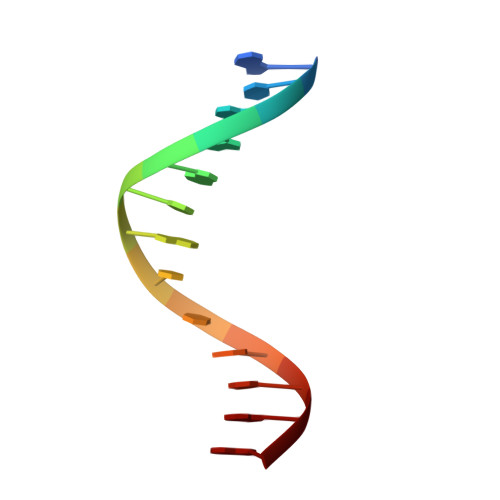The solution structure of a DNA duplex containing the cis-Pt(NH3)2[d(-GTG-)-N7(G),N7(G)] adduct, as determined with high-field NMR and molecular mechanics/dynamics.
van Garderen, C.J., van Houte, L.P.(1994) Eur J Biochem 225: 1169-1179
- PubMed: 7957208
- Primary Citation of Related Structures:
1DA4, 1DA5 - PubMed Abstract:
The solution structure of the cis-Pt-GTG adduct in the double-stranded oligomer d(CTCTAGTGCTCAC).td(GTGAGCACTAGAG) was studied with high-resolution NMR techniques. For model building, the distance information obtained from two-dimensional NOE experiments was used in molecular mechanic computations and molecular dynamic structure refinements. The structural distortion upon platination appears to be restricted to the base pairs Pt-G6.C21 and T7.A20; Pt-G8.C19 forms a normal Watson-Crick base pair. T7 is positioned in the minor groove and stacks with the highly propeller-twisted Pt-G6. There is no hydrogen bonding between T7 and A20. The complementary strand is undistorted; A20 stacks with its flanking cytidines (C19 and C21) as in regular B-DNA. The duplex is locally unwound (from base pair A5.T22 to G8.C19: 19 degrees) and is slightly kinked (20 degrees) at the platination site. The platinum coordination distorts the DNA structure at the 5' side of the platinated-GTG-sequence and changes the minor groove face.
Organizational Affiliation:
Department of Biochemistry and Molecular Biophysics, College of Physicians and Surgeons, Columbia University, New York.
















